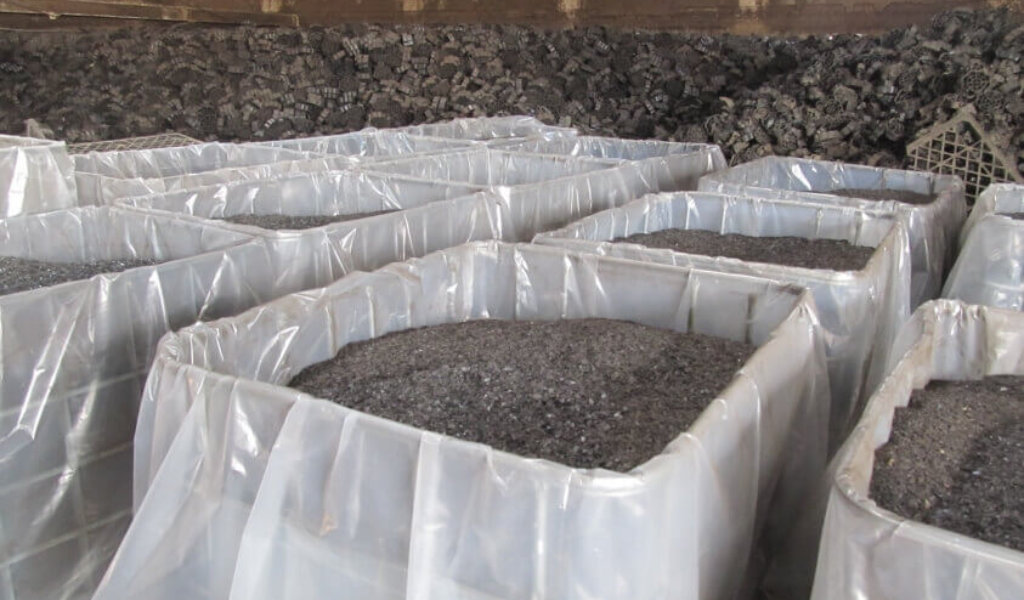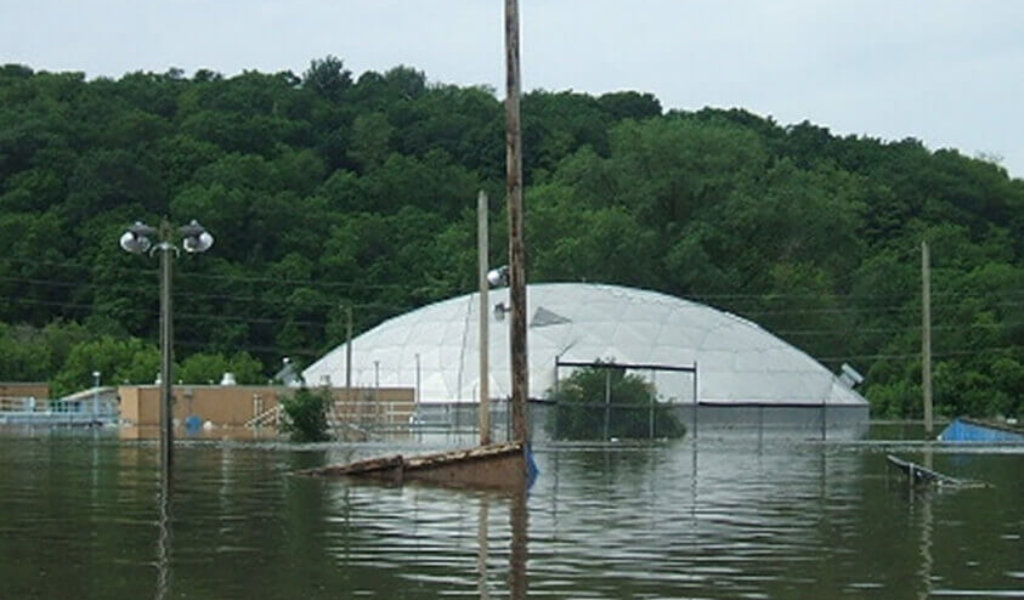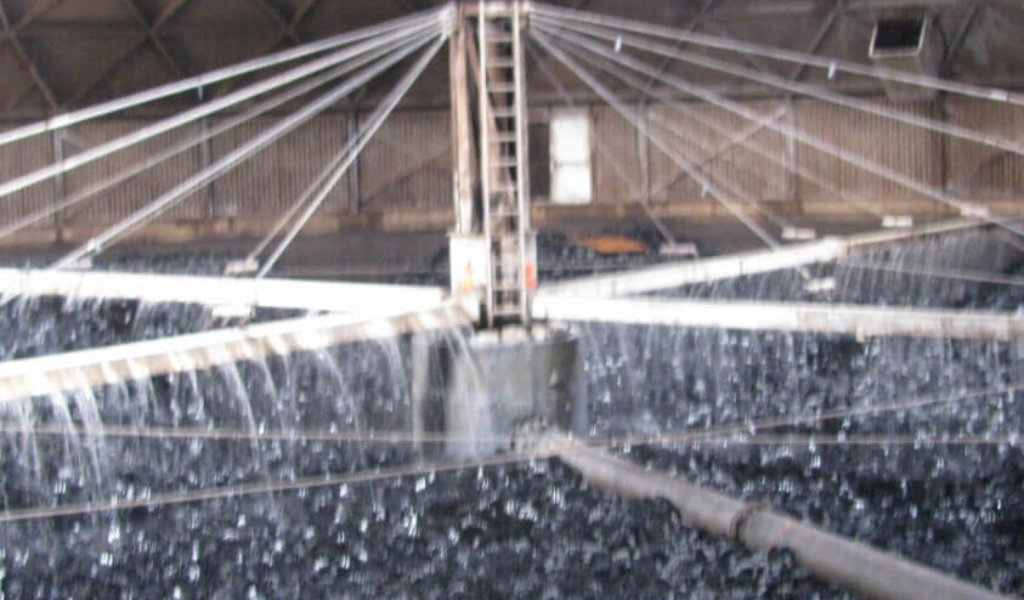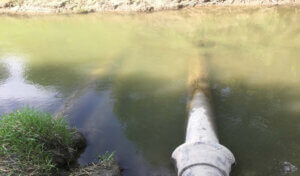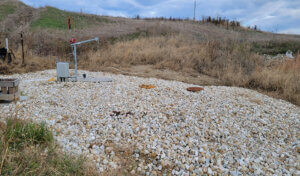
Flood Damage leads to a New, Upgraded Wastewater Treatment Plant
When historic floods hit the town of Anamosa, Iowa, the water rose to around four feet inside the local water treatment plant. As the plant-filled with murky floodwaters, it sustained significant damage, including harm to mechanical and electrical frameworks. Together, the loss of these systems and structural unbalance put the plant out of commission. City leaders recognized the need for repairs and hired Snyder & Associates to spearhead the project, including funding assistance, design, and construction management.
As waters receded, flood recovery efforts quickly followed with an initial focus on repairs to vital system mechanisms. At the time, the Federal Emergency Management Agency (FEMA) and Iowa Homeland Security & Emergency Management funds were better suited for repair and recovery, therefore no investments were made for mitigation in anticipation of future flood concerns. With the number of rainfall events producing intense precipitation projected to increase in the coming years, it was evident that without significant changes, the plant would flood again.
Through combined efforts by city officials and our team, this project received two additional funding opportunities, IJOBS and Community Development Block Grant (CDBG), adding to the project funds and totaling over $6 Million. This money was used in the design and construction of flood mitigated wastewater treatment plant improvements.
With funding secured, our team made strategic decisions with the FEMA recovery money, making purchases to be used for both short-term solutions during construction and permanent upgrades for the future plant. Significant investments included a grit and screening system for the new facility and plastic media replacing rocks in the old trickling filter system still being used as a temporary measure during construction. As this system was outdated, our team made the plastic versus rock suggestion to create a lighter, more affordable medium, which is easier to remove once construction on the new plant concluded, and the filter retired.
Why Switch from a Trickling Filter to Aeration Activated Sludge Treatments?
A trickling filter (TF) is an aerobic treatment system that utilizes microorganisms attached to fixed media such as rocks, gravels, or plastics to remove organic matter from wastewater. This type of system had been widely used across Iowa but has been phased out due to an inability to meet state nitrogen and phosphorous removal goals and recommendations.
Its replacement, the aeration activated sludge (Aero-Mod) treatment system, is currently the most common wastewater treatment option for mechanical plants across the country. During this process, bacteria-rich deposits called “sludge” are seeded into incoming wastewater. The mixture is agitated with continuous aeration for several hours in a concrete tank to further biological treatment and activity, meaning microorganisms using pollutants as a food source.
This Aero-Mod system successfully removes nitrogen and phosphorus, while also being energy and spatially efficient as all processes occur in one tank versus the multiple containers required by the previous system.
Construction of the New Wastewater Treatment Plant
Grant funding from both IJOBS and CDBG required a swift construction start. However, challenges occurred when gaining the Iowa Department of Natural Resources (DNR) construction permit approval. After discussion and negotiations, Snyder and Associates were able to meet all DNR requirements, and construction began as scheduled with grant funding.
Our team built the new plant adjacent to its existing counterpart on a man-made mound, creating a higher elevation and flood defense. This decision was made with a proactive and forward-thinking approach while continuing to remain in current space and budget boundaries.
A new lift station was designed to reuse existing lift station pumps, drastically reducing costs, which provided additional funding for the construction of a new headworks facility. This new section of the plant is used to house the FEMA-funded grit and screening removal system. This process removes large, unwanted items from the water before they clog the system, causing additional maintenance.
After completion, Anamosa’s new wastewater treatment plant effectively meets the community’s needs, producing approximately 1.25 million gallons of treated water per day.
Cost-Saving and Eco-Friendly Wastewater Treatment Recommendations
The plans designed by Snyder & Associates provided the City of Anamosa with a new wastewater treatment facility, finished water quality improvements, and overall cost savings. In addition, the design resulted in an empty structure where the old facility once operated. Anamosa’s Wastewater Superintendent, Dan Smith, took the opportunity to convert that structure into storage that currently holds treatment materials such as sand, salt, and dry sludge. He worked closely with our team throughout the planning, construction, and remodel phases to ultimately save the city over $800,000 while creating a wastewater treatment facility that is eco-friendly.
Since this plant’s construction, as additional funding and updated technologies become available, Snyder & Associates and the Wastewater Superintendent continue to work together, making proactive upgrades to the plant, securing successful operations for years to come.

